- Home
- James A. Michener
Sports in America
Sports in America Read online
2014 Dial Press Trade Paperback Edition
Copyright © 1976 by Random House LLC
Excerpt from Centennial copyright © 1974 by James A. Michener
All rights reserved.
Published in the United States by Dial Press Trade Paperbacks, an imprint of Random House, a division of Random House LLC, a Penguin Random House Company, New York.
DIAL PRESS and the HOUSE colophon are registered trademarks of Random House LLC.
Originally published in hardcover in the United States by Random House, an imprint and division of Random House LLC, in 1976.
eBook ISBN 978-0-8041-5139-9
www.dialpress.com
v3.1_r1
Contents
Cover
Title Page
Copyright
I. Basic Principles
II. Ways of Participating
III. Sports and Health
IV. Children and Sports
V. Women in Sports
VI. Sports and Upward Escalation
VII. Colleges and Universities
VIII. The Athlete
IX. The Inescapable Problem
X. The Media
XI. Financing
XII. Government Control
XIII. Competition and Violence
Epilogue
Author’s Note
Dedication
Other Books by This Author
About the Author
Excerpt from Centennial
ONE
Basic Principles
This book was written by a man who loves sports.
It would not be extravagant to say that twice in my lifetime sports have made the difference between life and death, and I must therefore treat them with respect. The first incident occurred when I was a boy, and it was spiritual in significance. The second took place when I was fifty-eight, and was completely physical.
Like many future athletes, I came from poor surroundings. Many of the boys with whom I played got into serious trouble and found themselves sentenced to Glen Mills, the local reformatory. I can still remember with awe the account of one street-mate who returned from Glen Mills: ‘As soon as the door slams behind you, a guard knocks you down, other guards grab you, and they beat you with a leather strap.’
‘Why?’ I asked.
‘To let you know who’s boss.
I developed a healthy fear of Glen Mills and determined not to find its door slamming behind me, but at the same time I was drifting into dangerous companionships. I knew that I was falling, almost against my will, onto perilous terrain.
I was saved by athletics, and by the generosity of a remarkable man. George Murray was an almost illiterate roofer who never earned more than a few dollars a day. An extremely shy man, he never married, but took upon himself the fathering of disadvantaged boys. He formed what was known as the Doylestown Boys’ Brigade, which had bits of military fol-de-rol and a tenuous allegiance to the Presbyterian Church. Most important for us, he gained access to a defunct meeting hall which had been erected for some aborted purpose. The second floor of this rather small building he converted into a basketball court, and there I spent my youth.
The court had every conceivable deficiency. The baskets were hung flat against the end walls, which meant that those of us accustomed to using them mastered the art of dashing headlong at the wall, planting our right foot high against the planking, and vaulting upward toward the basket, ending high above the rim so that we could then dunk the ball downward. This was a shot fairly hard to stop by a bewildered defender who had never before seen such a court.
The ceiling was unusually low, with a wide, heavy rafter right above the basket, and we became expert in speeding down the floor, and with maximum force slamming the ball vertically upward, so that it caromed back down through the basket. This, too, was a shot difficult to stop if you were not accustomed to it.
On this bizarre floor the Doylestown Boys’ Brigade fielded teams with far more than normal skills. We once went for a period of three years without losing a home game, even though we played teams that had better reputations and much taller players. At the time I thought we were pretty good, but now, looking back on those years, I realize that even superlative opponents would have required about three-quarters of a game to familiarize themselves with our peculiar floor and its strange rules. Our victories were tarnished.
‘Wait till we get you on a real court!’ our defeated opponents sometimes threatened as they left our little bandbox, but I noticed that when they did get us on their own court we were apt to be so much better trained and so determined that we defeated them there too.
As a result of this roofer’s concern for boys, a constant supply of young fellows like me was provided the local high school, which also produced championship teams, even though it consistently competed against schools that were markedly bigger. But now my life fell under the control of a much different man, who, in a very real sense, determined my future.
J. Allen Gardy was a tall, moderately gifted athlete who had played basketball for nearby Lehigh University. He was a printer by profession, a publisher of a hunting magazine by avocation, and an amateur coach of high school basketball out of the goodness of his heart. At the precise time in my life when I required strong guidance, he threw me a basketball and said, ‘Let’s see if you can make a lay-up.’
He was a simplistic man to whom everything was either good or bad, and he knew the difference. Fried foods were bad, and alcohol, and cigarettes, and fooling around with girls, and talking back to teachers, and staying up late before an important game, and anything that was ungentlemanly or unsportsmanlike. He subscribed to the highest possible standards, and observed them himself. You could go to him with any problem and get an immediate, clear-cut decision.
J. Allen Gardy knew, and his knowledge covered the universe. Like most coaches, he considered Democrats bad, and labor union people, and troublemakers, and college professors, and radicals, and anyone not wholeheartedly in support of the good society as he experienced it.
But most of all, he knew how to encourage young boys to develop themselves to their fullest, to compete ruggedly, to observe the basic rules of sportsmanship. He held us to rigorous performance, made us run more practice laps than any other coach in the region, and drilled us incessantly on fundamentals.
As a consequence of Coach Gardy’s attention, we went several years without losing a home game and won the vast majority of our away games, even though we consistently played teams from larger towns and cities. Our high school court was a spacious one, and we simply ran the other teams ragged, but when we were thrown into little jewel boxes, as at Lansdale and Perkasie, our previous training on Uncle George’s tiny court stood us in good stead. All of us could climb the back wall and dunk the basketball. All of us could ricochet shots off low ceilings, and we customarily won just as easily on small courts as on large.
Looking back on those hectic and triumphant years, I am not sure that we gave our competitors a fair shake. We were unfair for a reason not of our making. A few years before I entered high school a Doylestown boy had been killed playing football—killed right on the playing field. The ensuing revulsion was so great that football was banned during my years at school.
As a consequence, we spent our fall term getting ready for basketball, and by the time the season opened we were so advanced in our training that we were almost professionals. Year after year we were something like 12–0 or 14–1 in game standings before the opposition was really ready to play. In the later stages of the season, when the opposing teams were beginning to settle down, they sometimes drubbed us, but by then we were so far ahead in the standings, we could not be overtaken.
We played each Tuesday and Frida
y, a brutal schedule, and often totaled as many as twenty-seven or thirty games a season. It was our whole life, and our constant guide was Coach Gardy, that quiet, resolute man who could answer any question. At a time when my personal life was chaotic and required a firm hand, he was there, a surrogate father, a stern counselor, a man who never doubted that good things lay ahead for me.
If there was ever an American boy who was saved by sports, it was I. Gardy was helpful in getting me an athletic scholarship to Swarthmore, so that even my future education depended upon sports. He encouraged me to play baseball—good field, fair hit—and gave me a tennis racket, which I could otherwise never have afforded, thus introducing me to the game which has been my constant companion and chief delight.
But there was something more. In Uncle George’s small gym and Coach Gardy’s larger court we won championships and I came to regard myself as a champion. I carried myself a little taller, worked a little harder in school, built a confidence that was crucial. I drew away from the boys who were headed for reform school and patterned myself after those who were headed for college.
I was a heavy scorer in days when a game that ended 23–17 in our favor was reported as ‘another runaway,’ and I garnered more praise than I deserved, but I can never forget those wintry Saturday mornings, after some sterling victory, when I would saunter into the middle of town, and everyone would know how many goals I had scored the night before. I remember particularly the Saturday in 1924 when we came home with the championship. In the last moments of the game on Friday night I had thrown the ball a disgraceful distance with no hope of scoring, and somehow the ball had dropped into the net and we had won, 16–14. That Saturday I had to explain to the men of our town how I had made that last, unbelievable shot, and the men said, ‘The whole town is proud of you.’
Young people need that experience of acceptance; it can come in a variety of ways, of which athletics is only one. For example, they need to know that their parents approve of them; they need occasional praise from an older person. But in the United States it is sports that have been elected primarily to fill this need.
It was remarkable, I now realize, that during those years of athletic achievement in high school I was also earning straight A’s in my classwork but I cannot recall a single instance in which any member of my community gave me any accolades for such accomplishment. In Doylestown, in those days, all that mattered was sports, and even today across America things are not much different.
Assessing those distant days as honestly as I can, I must confess that our team was never really first rate. No boy I ever played with or against could even make a first-class team today, and if our team were to play a modern high school, the score would be something like 97–22, with us losing.
And yet, in our little world we were champions, and from that simple fact radiated an inner confidence that has never left me. I could never become a bum, because I was a champion. Realizing this, I was able to lift myself onto a level of existence I could not have otherwise attained.
The second time sports saved me came in the autumn of 1965, when I was knocked down by a massive coronary infarction. Five hours elapsed before I reached a hospital, and several times in that period I was sure I was going to die.
I had the good fortune to have as a family friend Dr. Paul Dudley White, the cardiologist who treated President Eisenhower. My wife and I had met him while serving on a cultural committee visiting Soviet Russia, and in the idle periods of the conference he had given me a concentrated course on heart attacks.
‘Some years ago I was summoned by the Pentagon,’ he said. ‘They had an aggravating problem. They were sending to duty in Alaska some of their finest young colonels, men in their late forties and apparently in perfect health. Well, these eager colonels were going out onto the ski slopes and dropping dead at an alarming rate.
‘A group of heart specialists like me went to work, and we put all the cases we could find into a computer, but it told us nothing. There was no single cause why healthy young colonels should be dropping dead on ski slopes. But we were able to construct a profile of factors which, while not causative individually, were predictive if they clustered.’
‘What were they?’ I asked.
‘Cholesterol in the blood. Gross overweight. Smoking. History of diabetes. Previous attack of gout. And three special factors which were of acute significance. One, high blood pressure. Two, a father or an older brother who had died of a heart attack. Three, body type.’
‘What’s body type?’
‘Ectomorph. Endomorph. Mesomorph. An ectomorph is tall and skinny, like Abe Lincoln, or Kenneth Galbraith on our committee. They very rarely have heart attacks. The endomorph is pear-shaped, or round and chubby, like Pierre Salinger. You know, there’s not a pound of improper weight on that man. That’s the way he’s supposed to be. They don’t have many attacks either. It’s the mesomorph that gets them.’
‘What’s a mesomorph look like?’ I asked.
He leaned back and studied me carefully. ‘You,’ he said. ‘Big chest. Heavy bones. Shoulders curving in. The mesomorph is probably a throwback to the apes. You’re the good athletes, the hypertensives, the ones who work eighty hours a week. And play hard.’
I remember distinctly—we were in Leningrad at the time—that he poked me in my protruding apelike chest. ‘You’re almost a caricature of the mesomorph. You’re a prime target for a heart attack.’
‘I had a high school coach who steered me away from smoking, drinking and fried foods. I have very low blood pressure.’
‘Gout?’
‘Yes.’
‘I thought so. That’s the disease of the intellectual perfectionist. Your father or brother die young?’
‘I don’t know about my parents.’
‘You’re not conspicuously overweight, but gout indicates you’re a man with a good deal of inner tension. How about your cholesterol?’
‘I don’t know that word.’
‘You’ll be learning it. But I’ll bet you drink a great deal of milk.’
‘Yes. Always have.’
‘Cut it out. Lose weight. And learn to relax, or you may find yourself within the profile.’
‘Is the profile as predictive as that?’
‘I’ll tell you what, Michener. If any man told me that he smoked two packs a day, that he had diabetes, that his cholesterol was high, and that his father and brother had dropped dead of heart attacks, I’d advise him to go into a hospital right away. He’d be terribly sick.’
‘Should I quit playing tennis? I play a very tough game.’
‘Absolutely not!’ he had concluded. ‘Exercise as much as you can. It may save your life.’
When Dr. White reached the hospital, my wife asked him if my playing tennis had caused the attack. ‘Heavens no!’ he said. ‘The only reason Jim is alive right now is that robust exercise forced his heart to set up alternative feed lines. Normally, with that much damage he’d be dead, but his heart had already constructed those bypasses, and they’re keeping him alive now.’
It was fortunate for me that I had my attack in 1965 and not twenty years earlier, for in those uninformed days I would have been converted into a cardiac basket case, coddling myself and living in a kind of suspended animation. Dr. White realized that historically one of the greatest dangers of a heart attack, if the patient survived, was what doctors did to him in the postattack period.
‘My advice is radical,’ he told me. ‘If, during the first six weeks after a severe attack, you try to do even little things, you’re foolish, for the heart fibers require time to knit together. But after the mending has occurred, if you don’t try to do everything you did before, in moderation, you’re even more foolish.’
Dr. White had developed this theory himself, and had proved it by the manner in which his patients resumed a full life after even the most devastating attacks. We forget that Dwight Eisenhower had his attack during his first term, and that after his attack he conducted the 1956
campaign and served four additional years in the world’s most demanding office. Lyndon Johnson recovered from his attack, served in the Senate and then the Presidency.
White told me that he had been much influenced by an Israeli cardiologist who, working by himself, had developed a comparable theory. ‘This man will not treat a cardiac patient unless the patient agrees, upon recovery, to perform some athletic feat much more strenuous than anything attempted previously. Like climbing Mount Tabor or rowing five miles or hiking twenty. He tells his patients, “If you drop dead climbing, all it means is that you’d surely have dropped dead sitting at your desk.” ’
Under Dr. White’s regime I was soon playing tennis again, very vigorously, but not singles. I traveled six times around the world. I researched and wrote six difficult books. I ran for office and served in various demanding jobs. And I took a nap almost every afternoon, as he prescribed, and laid off eggs, cheese and milk, which I crave.
I am convinced that hearty athletic competition saved my life in 1965. I am convinced that vigorous athletic participation has kept me healthy and viable in the succeeding years. I suspect that under the old-style restrictive regimen of no exercise, I would now be either dead or a vegetable-like cardiac cripple. The wild games I have played these last ten years, plus the endless walks up and down hills, have kept me in good spirit and eager to tackle new work.
My debt to sports is therefore considerable, and the reader will understand why I might want to write about them, but the justification for this book goes far beyond anything personal. Sports have become a major force in American life. We devote more money and time to them than we realize. They consume a major portion of our television programming, and our newspapers allocate tremendous space to their coverage. They dominate the dreams of ghetto children, who see them as their traditional way of escape: they have become a fetish to our black community, distracting it from more serious solutions to problems. Their effect upon our schools and colleges is oftentimes deplorable, and they have been accused of generating at least some of the violence that assaults us.

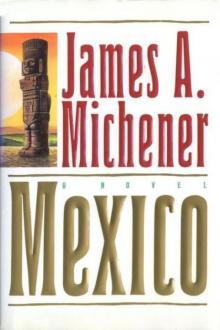 Mexico
Mexico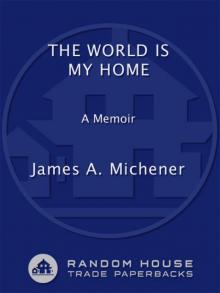 The World Is My Home: A Memoir
The World Is My Home: A Memoir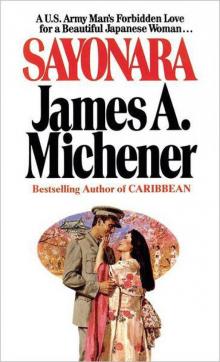 Sayonara
Sayonara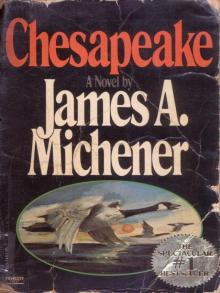 Chesapeake
Chesapeake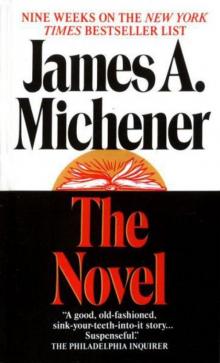 The Novel
The Novel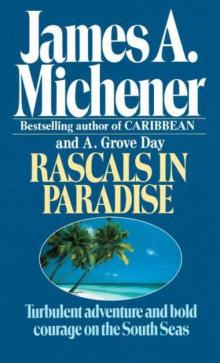 Rascals in Paradise
Rascals in Paradise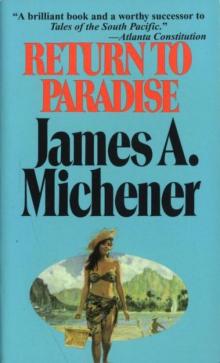 Return to Paradise
Return to Paradise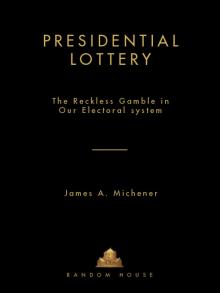 Presidential Lottery: The Reckless Gamble in Our Electoral System
Presidential Lottery: The Reckless Gamble in Our Electoral System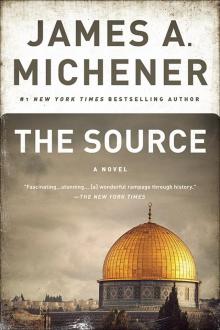 The Source
The Source Poland
Poland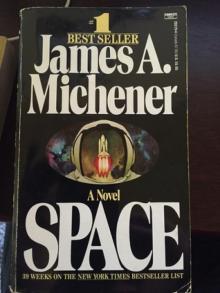 Space
Space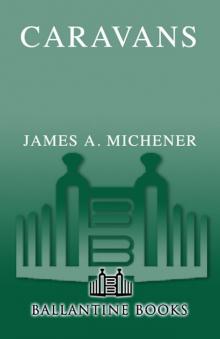 Caravans
Caravans Creatures of the Kingdom: Stories of Animals and Nature
Creatures of the Kingdom: Stories of Animals and Nature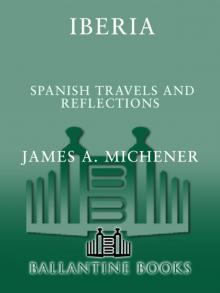 Iberia
Iberia Hawaii
Hawaii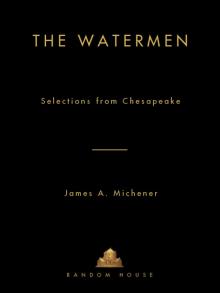 The Watermen: Selections From Chesapeake
The Watermen: Selections From Chesapeake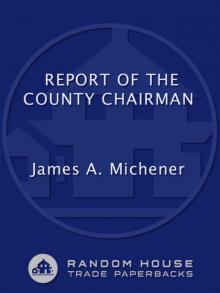 Report of the County Chairman
Report of the County Chairman The Covenant
The Covenant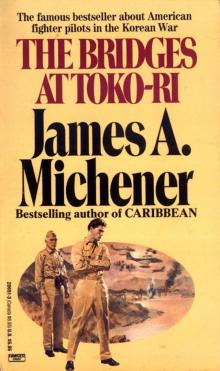 The Bridges at Toko-ri
The Bridges at Toko-ri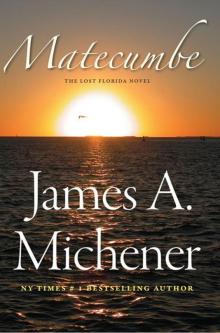 Matecumbe
Matecumbe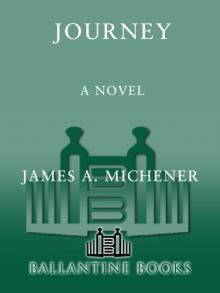 Journey: A Novel
Journey: A Novel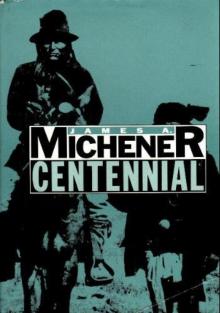 Centennial
Centennial Sports in America
Sports in America Texas
Texas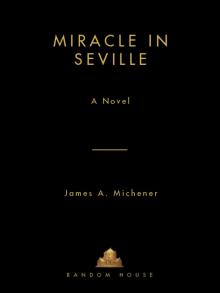 Miracle in Seville
Miracle in Seville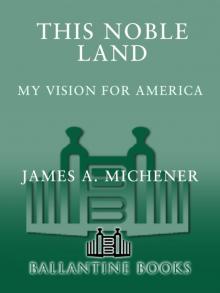 This Noble Land: My Vision for America
This Noble Land: My Vision for America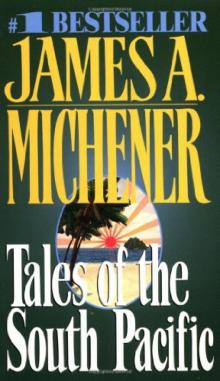 Tales of the South Pacific
Tales of the South Pacific Bridges at Toko-Ri
Bridges at Toko-Ri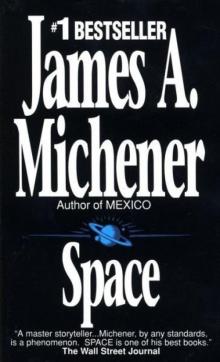 Space: A Novel
Space: A Novel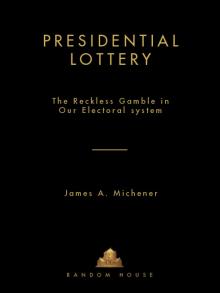 Presidential Lottery
Presidential Lottery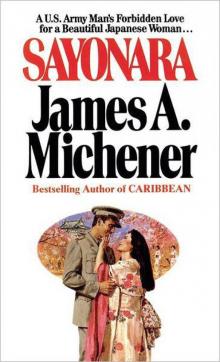 Sayonara: A Novel
Sayonara: A Novel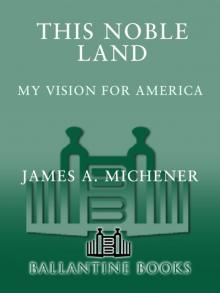 This Noble Land
This Noble Land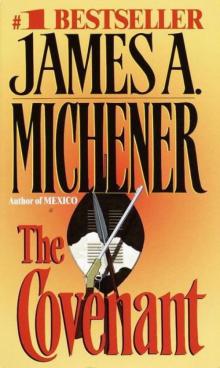 The Covenant: A Novel
The Covenant: A Novel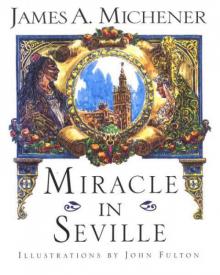 Miracle in Seville: A Novel
Miracle in Seville: A Novel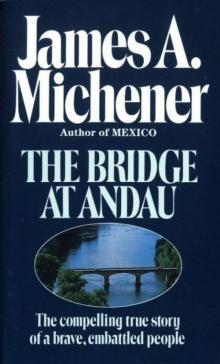 The Bridge at Andau
The Bridge at Andau Source
Source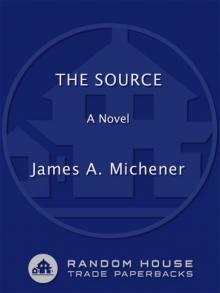 The Source: A Novel
The Source: A Novel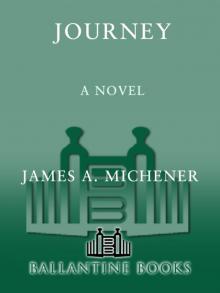 Journey
Journey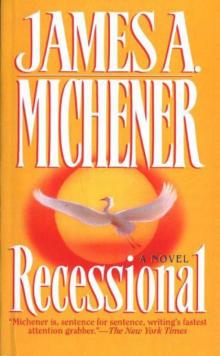 Recessional: A Novel
Recessional: A Novel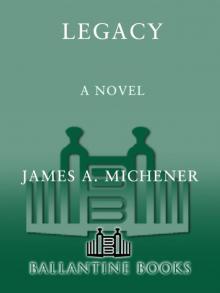 Legacy: A Novel
Legacy: A Novel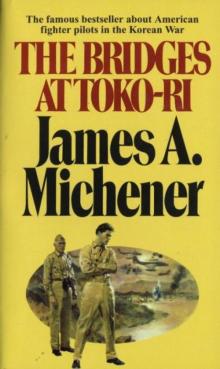 The Bridges at Toko-Ri: A Novel
The Bridges at Toko-Ri: A Novel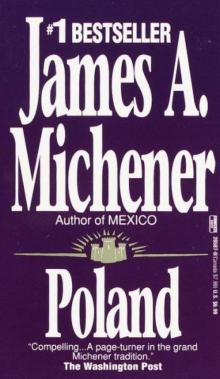 Poland: A Novel
Poland: A Novel